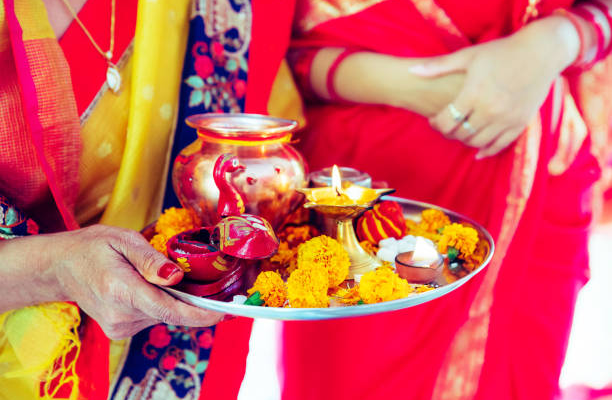Prasadam, as it is popularly known in India, is a unique exploration of the indigenous kitchen and religious heritage. Indian temple food is a tradition based on purity rather than just being a meal. It’s an offering made to God that must be prepared in a very special way. Over centuries, this kind of cooking has remained unchanged for many generations. If you want to know how Indians cook rich foods that are spiritual at heart, then you might try eating some prasadam.

The Importance of Prasadam in Indian Temples
One of the key components of Hinduism is Prasadam, which involves offering foods to gods in temples. Once blessed through this process, such food is given to devotees as divine tokens. When preparing prasadam, emphasis is laid on purity and devotion; thus, there are strict guidelines on how it should be handled. The ingredients used in making it are usually sourced from organic farming and local suppliers, while cooking involves chanting prayers during preparation.
Indian temples have different types of prasadam recipes because they vary depending on the region where these holy sites are located. In South India, temples’ offerings will include puliyodarai (tamarind rice), curd rice, or sweet pongal, while in North India, they comprise kheer (sweet rice pudding), halwa, and puris, among others. Each dish represents specific flavors and seasonal ingredients associated with its locality, explaining why Indian temple food truly mirrors local cultures and traditions.
Cooking Indian Temple Food
What separates Indian temple food from other cuisines is the great attention paid to details during its preparation stage. Mostly traditional methods are utilized; hence, reliance on earthenware pots mixed with brass and copper utensils believed to enhance taste factors related to purity, like the metallic taste associated with iron cookware, has gone into our stomachs long enough. The level of spice use is kept at a minimum so as not to dominate the actual taste of the ingredients. These attributes are what make Indian temple food distinct compared to other types of cuisines in India.
Within many temples, kitchens have been considered sacred places, meaning that only individuals who have gone through particular rituals can access them for cooking preparations. Making prasadam is regarded as an act of worship, and this has seen chefs trained using traditional techniques handed down from one generation to another. This strong relationship between spiritualism and meals is attributed to making Indian temple cuisine different from others in its genre.
Sacred Food Traditions and Their Health Benefits
Indian temple food goes beyond spirituality; it is known to be healthy too. The foods that are used contain a lot of freshness and are pure with balance related to the sattvic diet, which is perfect for a holistic well-being. Grains, legumes, vegetables, and fruits form key ingredients for most prasadam recipes, thus creating a balanced diet rich in vitamins, minerals, and fibers.
For example, khichdi is considered the ultimate comfort food that is not only easy on digestion but also provides enough nutrients at this time of year when our bodies need more sustenance than usual. The use of ghee instead of oil in many prasadam recipes has health advantages such as aiding digestion and promoting good gut health. Furthermore, Ayurvedic philosophies advocate purity along with minimalism, where Indian Temple cuisine falls into place by providing nourishment both for the body and mind alike.

Embracing the Indian Temple Cuisine Essence
In today’s fast world, where convenience often trumps tradition, getting into temple cuisine of India offers a welcome return to simplicity and mindfulness in cooking. Temple food of India is a combination of flavors and traditions that can be both satisfying and soul-stirring for anyone interested in good eating or spiritual nourishment.
To capture what Indian temple food really entails, it’s important to know its cultural and religious context. By following these sacred culinary customs, you not only eat food but also tap into some deeper values such as dedication, purity, and togetherness, which are the essence of Indian temple cuisine.
Discover the Sacred Flavors with Indian Temple Food
Every dish tells a story—whether it’s about devotion, traditionalism, or the eternal connection between nutrition and spirituality that exists in all religions across the globe. Whether you try prasadam at your local temple or make them at home, this will definitely be an enriching experience at every turn.
For those who want to learn more about Indian culinary practices and taste authentic meals while traveling across India, downloading the HOGR app will give access to a range of holy tastes. HOGR enables users to find eateries offering typical temple cuisines besides other regional delicacies, hence making Indian temple dishes available on their tables.















